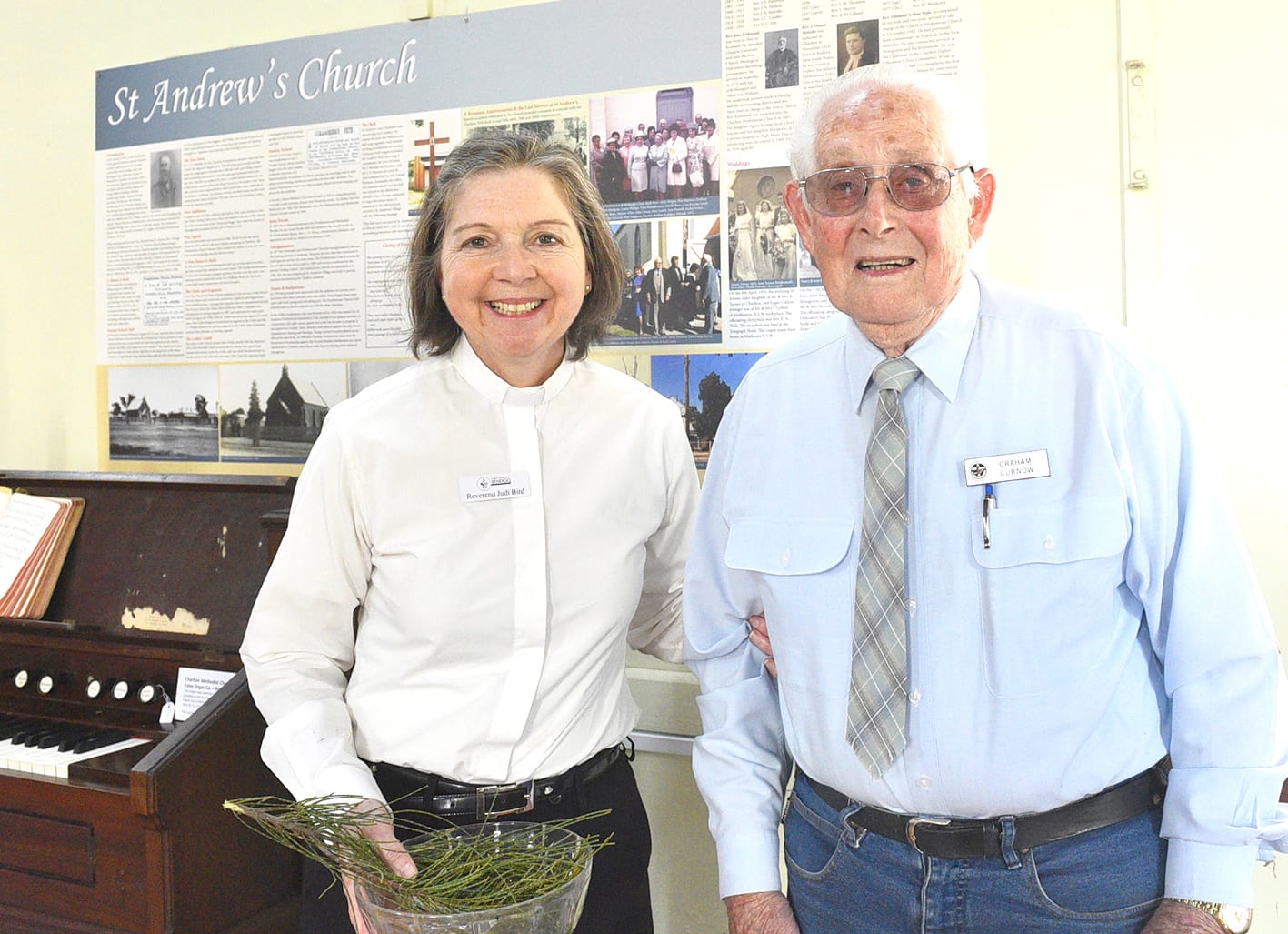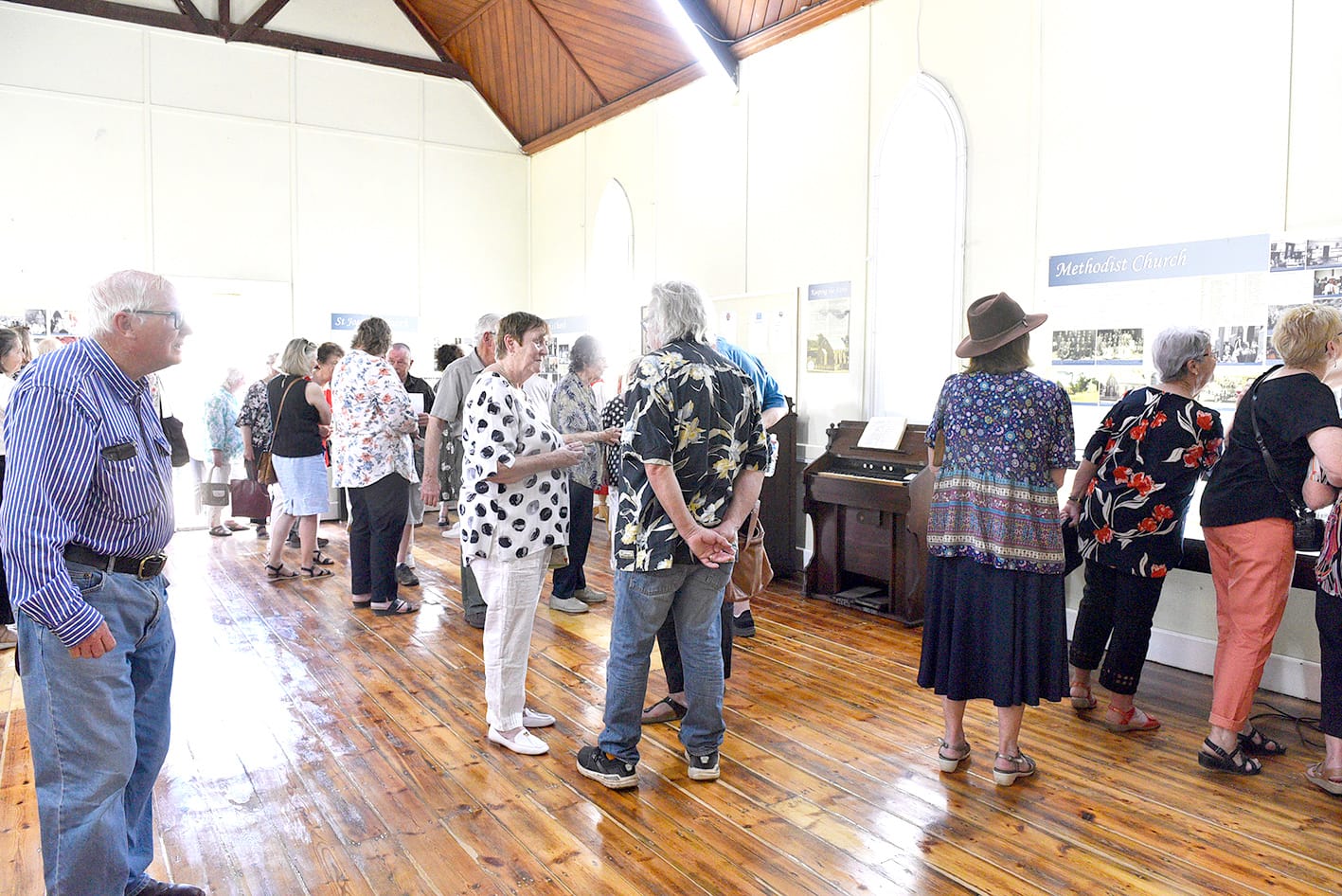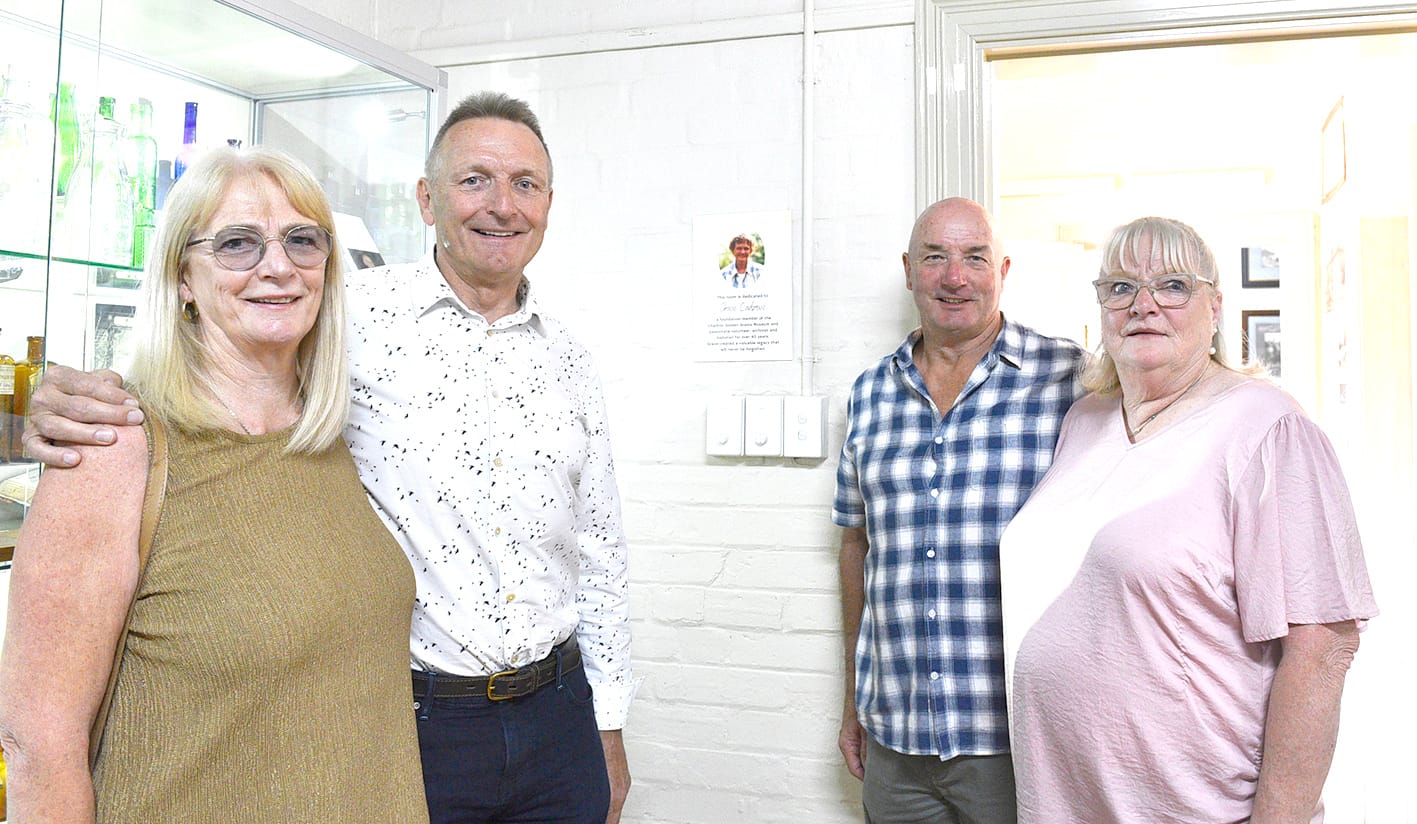Golden Anniversary for Charlton Museum
“This room is dedicated to Grace Cadzow, a foundation member of the Charlton Golden Grains Museum and a passionate volunteer, archivist and historian for over 40 years. Grace created a valuable legacy that will never be forgotten.”

Fifty years of operation were celebrated by Charlton’s Golden Grain Museum last Sunday on a day which was dedicated to both reflection and the evolution of the local historical powerhouse.
Unfortunately, the event was somewhat overshadowed by the fire and destruction of the town’s landmark Post Office just further down the main street.
The acknowledgement of half a century of amassing, curating and maintaining Charlton’s local historical content was showcased and applauded as the unveiling of the Museum’s latest addition and display was dedicated and formally opened to the public – and a special recognition for former foundation member, and driving force behind the Museum, Grace Cadzow, was conferred.
Opening with a welcome and a brief introduction Museum president, Diane Wood, related the beginnings of the drive to establish a way of preserving the Charlton’s local history – a matter which concerned the Charlton Chamber of Commerce in the early 1970s.
Public Meeting
Following a public meeting called in October 1973, and attended by “17 enthusiastic citizens” – one of whom was Heather Hargreaves, who was at last Sunday’s gathering – the Charlton Golden Grains Museum Committee was formed and tasked with establishing a museum to preserve and showcase the town’s history.
The group received free tenancy at the Mechanics Institute building which had recently been vacated by the Soil Conservation Authority. Aligning with the wheat growing area, the name of “Golden Grains Museum” was suggested, and following an appeal for multiple items of historical interest, the committee held its first successful display in December of that year.
Momentum continued in the following years with the donation of local newspapers dating back to 1878 by “Charlton Tribune” proprietor, Ian Cameron, along with the acquisition of copies of the North Central News.
Further rooms in the building became available for use in 1977 and 1995, significantly increasing the display capabilities.
The Flood
Like most of the Charlton community, the 2011 flood wrought significant damage to the Museum, impacting both the building and collection with almost half a metre of water washing through the premises.
Following restoration and repairs, operation resumed in March of 2013, and since then the Museum has become a point of inspiration for similar small operatives. Recognition has continued through the receival of a significant industry award for excellence, along with acquiring Australian Museum and Galleries Association Accreditation.
Contributions
Recognition of members’ contributions was also highlighted by Diane, with special acknowledgement for Joan Mundy for 30 years of service, and Sue Walsh for 25 years service (14 of which as president). Current secretary, Carolyn Olive, was also recognized for her outstanding contributions as curator and writer, having published 6 books on various aspects of local history, including Charlton’s 150 years.
Grace Cadow
Recognition of former member, Grace Cadzow, was then presented by Museum secretary, Carolyn Olive.
Success comes with passion and vision, and foundation member of the Golden Grains Museum, Grace Cadzow epitomized that dedication with her drive and ability to share her extensive local knowledge – nurturing the Museum and its outreach to a wide audience for over 40 years.
“Today we would like to acknowledge a very special person who sadly is no longer with us, but has left a behind a valuable legacy,” said Carolyn. Reflecting on her personal connections with Grace, she said she was a “terrific teacher and her knowledge of local history seemed endless”. “I wish we could have digitized her brain,” said Carolyn. “What an amazing resource that would be!”
Dedication



The dedication of the main display room as the “Grace Cadzow Room” is a most fitting tribute on this half-century anniversary, and as Carolyn continued, “While Grace was given a Life Membership many years ago, we didn’t want her legacy to be forgotten.”
Researching, compiling publications, archiving, freely assisting volunteers, embracing new technologies and industry advancements, Grace also encouraged the next generation of historians to step forward, thereby ensuring the future preservation of Charlton’s history and creating a centre for ongoing research.
The dedication plaque to Grace reads:
“This room is dedicated to Grace Cadzow, a foundation member of the Charlton Golden Grains Museum and a passionate volunteer, archivist and historian for over 40 years. Grace created a valuable legacy that will never be forgotten.”
With Grace’s four children in attendance, son, Mark spoke on behalf of the family, reiterating his mother’s passion for history and research – often to the detriment of the family, he quipped – before saying how much they appreciated this gesture of recognition.
Wesleyan Chapel Opening
An additional celebration for the day included the official opening and dedication of the Wesleyan Chapel in Halliday Street which now houses the display “Keeping the Faith”, presenting memorabilia from all of Charlton’s churches from the town’s inception through to contemporary times.
A long-time project, the 1876 Chapel – which is now one of Charlton’s oldest remaining buildings – was used as a storage space for the Museum over the past 15 years. Considered to be an ideal display area, the process of bringing this to fruition was encumbered by a variety of factors, before the donation of a number of organs, a successful grant for showcases and the looming 50th anniversary triggered what was a “slow jog, into a sprint to the finish”.
Thanks to significant donations, generous support from the Charlton Uniting Church, local clubs, organisations, local trades people and many supporters, the renovated structure currently showcases the extensive Church exhibition which includes extensive memorabilia and interpretative panels.
While covering all the denominations reaching back to the establishment of Charlton in 1863, Carolyn Olive also included and acknowledged the heritage of the Dja Dja Wurrung First Peoples – honouring their deeply held beliefs and respecting their enduring connection to the land of this area.
Memories
Longtime resident and Uniting Church member, Graham Curnow, then spoke about his recollections of the Chapel, saying, “This building has so many memories for me” as he related the fun times from Sunday school to youth group gatherings, games nights, concerts, play readings, songs around the piano, along with naming many of the people who were closely associated with the Church related activities.
In concluding, Graham said, “On behalf of the Uniting Church, I have pleasure in handing over the use of this old building, with all its memories, to the Charlton Museum to carry on keeping the faith.”
Due to the warm weather all the day’s formalities were conducted indoors at the High Street location, but following Graham’s address the large crowd was invited to move across the road for the formal dedication of the Wesleyan Chapel by the Reverend Judi Bird, before taking time to peruse the new exhibition.
Acknowledgments
The Golden Grains Museum wishes to acknowledge the following for their contributions and support for the development of the Wesleyan Chapel project:
Charlton Uniting Church – use of the building, embracing the plans and $10,000 donation towards the floor repairs. Charlton Op Shop – $5,000 to make up the shortfall for the floor repairs. Charlton Rotary Club – $2,000. Australian Museums and Gallery Association – $27,000 for showcases and window coverings. Tradies – Kirk Boyle, floor repairs; Matt Holmes-Brown, new window shutters; John Stahl, reconnecting power, provision of lights and power points. Resolution Imagining, printing of storyboards. Helpers: the Patullo family, Wayne Keenan, Troy Heenan and Darcy McCallum, moving heavy exhibits. Chris McGurk – window cleaning. Clinton Olive – placement of interpretive panels. Proof readers – Anne Kenny, Chris McGurk and Kaylene Cossar. Contributors of memorabilia for the displays, and fellow Museum members for their support and enthusiasm for the project.
All were then invited to share afternoon tea.







